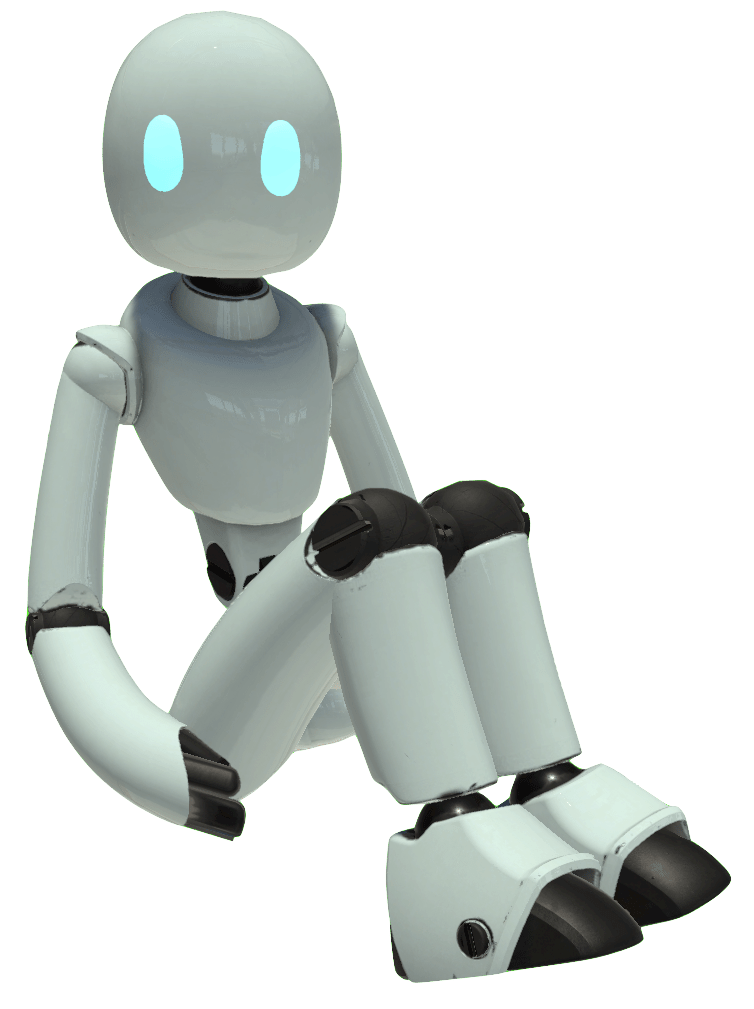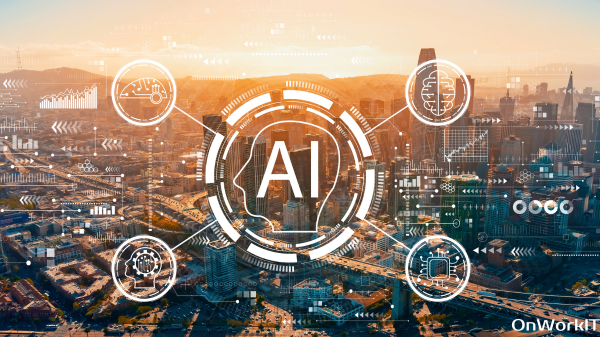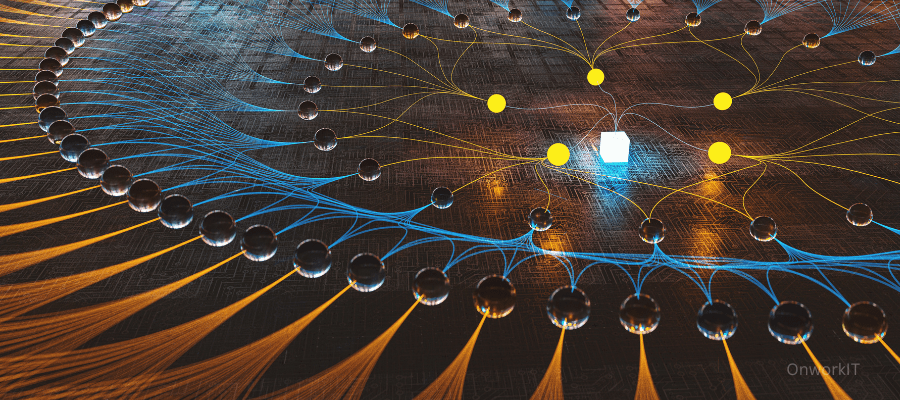Introduction to AI Simulation
Artificial Intelligence (AI) simulation enables researchers and developers to create, assess, and improve AI models in virtual environments. Artificial intelligence simulation is basically the computing model-based replication of human reasoning and decision-making. Understanding and improving complex systems so that they may work successfully and efficiently in real-world settings rely on this modeling.
One cannot stress the value of artificial intelligence simulation very much. Apart from healthcare, it is an important tool for many other industries, including banking, automotive, and aerospace as well as for By allowing artificial intelligence systems be tried experimentally, simulation minimizes risk, lowers expenditures, and speeds development. For instance, artificial intelligence modeling in the production of driverless cars helps engineers repeat millions of driving situations and reveal any problems without the demand for real prototypes.
Historical Approach
The idea of artificial intelligence simulation has grown greatly over years. Sometimes the computer powers at the time hampered the complexity of early artificial intelligence models. Conversely, as technology and program design improve, modern artificial intelligence models are somewhat more complex. They can today properly show complicated ecosystems and relationships. Technological breakthroughs in data analytics, neural networks, and machine learning have sped up this process, consequently giving additional choices and applications for artificial intelligence simulation.
Moreover, goals of artificial intelligence models have grown. The goals now expand beyond only describing core AI principles to cover the building of strong, versatile AI systems capability of executing demanding tasks on their own. These innovations not only are transforming current sectors but also create fresh chances for inventive uses and next research efforts.
In fact, the evolution of artificial intelligence depends heavily on artificial intelligence simulation. Its potential to recreate and improve human-like decision-making under controlled circumstances stresses its value for present technology as well as future projects of study. Deeper into its intricacies, studying the beliefs, aims, and history of artificial intelligence modeling can assist us to better understand its revolutionary ability.
AI Simulation Techniques

AI simulation consists on numerous methods for complex system modeling and prediction. Among the most well-known uses are Monte Carlo models, agent-based modeling, genetic algorithms, and neural networks. These innovative and widely utilized methods of problem-solving find application in many other fields.
Agent-Based Modeling (ABM)
One useful way is to model agents—that is, discrete entities—to interact with a fixed settings. Every agent works under a set of principles; emergent behavior may be watched and rated by means of interactions with other agents. ABM allows the social sciences, economics, and health scenario analysis and the evaluation of how individual actions affect the total system, therefore benefitting them. ABM might, however, be computationally expensive and require a lot of data if it is to properly recreate real-world happenings.
Monte Carlo Simulations
Mathematical functions are approximated and system behavior is modeled using statistical modeling and random sampling. Risk analysis, engineering, and finance all commonly adopt this approach as it can cope with doubt and instability. Because of their flexibility and endurance, Monte Carlo simulations are usually effective for handling complicated systems. But they could be computationally costly and need a lot of iterations if one seeks solid results.
Neural Networks

depend on the order and powers of the human brain. Neurons, widely known as networked components, make up these systems and layer-wise process information. Because they shine in pattern identification tasks like voice and picture recognition, neural networks are extremely useful in sectors including natural language processing, autonomous driving, and healthcare. Although highly efficient, neural networks usually demand large volumes of computing power and training data. Their black-box feature could make interpretation difficult quite a bit.
Genetic Algorithms
Use natural selection to go over issues with optimization. By processes of crossover, mutation, and selection, they create a population of effective solutions which they then employ to progress during subsequent generations. In search and optimization uses including machine learning model refinement and route planning, genetic algorithms are particularly powerful. Though powerful, their delayed convergence and tendency to stay imprisoned in local optima limits its applicability in some applications.
These artificial intelligence simulation approaches find value in various industries. Financial contracts are valued using Monte Carlo models; agent-based modeling is used to imitate the spread of infectious illnesses. Whereas evolutionary algorithms maximize complex logistical networks, neural networks drive face recognition systems. Using AI models to handle a broad range of demanding and complicated real-world scenarios requires on an understanding of these methods and their uses.
AI Modeling
Artificial intelligence rests on artificial intelligence modeling since it helps you duplicate intelligent behavior by building computer models. These models imitate human decision-making processes, hence enabling in-depth study and constructive ideas across a range of businesses. There are numerous types and goals for each of the several AI models. While prescriptive models advise behaviors to achieve desired goals, descriptive models give insights into data patterns and correlations; predictive models project future occurrences based on current data.
First of several critical aspects in the AI modeling method is data gathering. A strong artificial intelligence model depends on high-quality, useful data. The data is preprocessed to guarantee it is clean and okay for analysis following data collecting. Model training happens next; algorithms learn from data to find trends and forecasts. At this step, careful algorithm selection and hyperparameter adjustment are important to improve model performance.
Validation is used to check the model’s generalizability and accuracy following training. Often the data is split into training and validation sets to evaluate the model using uncontrolled data. One widely used way to ensure model stability is cross-valuation. Once confirmed, the model is brought into production so that real-time prediction and decision-making may occur.
Achieving the needed results from a particular application depends on picking the right artificial intelligence model. Among the factors to take into account are the nature of the problem, the available data type, and the degree of interpretability necessary. While predictive models are useful for expecting sales trends, prescriptive models are more appropriate to improve supply chain processes. Through careful selection and optimization of models, firms may harness artificial intelligence to enhance innovation and efficiency.
Applications of AI Simulation
Many diverse sectors have employed artificial intelligence simulation; each benefits from its ability to handle particular challenges and improve working efficiency. In the medical realm, artificial intelligence modeling is altering patient care and research study. It may be used to recreate complicated procedures, hence giving surgeons a risk-free setting in which to build up difficult abilities. By forecasting how diseases will progress, AI-powered simulations also serve to promote more personalized treatment plans and better patient results.
Finance

In the financial industry, artificial intelligence simulations help to improve investing strategies and predict market trends. These simulations allow financial companies predict economic conditions and analyze the consequences of different financial policies. This predictive ability helps to lessen risk and encourage prudent decisions. Moreover, by fully examining transaction trends and finding irregularities, artificial intelligence modeling helps to discover fraud.
Automotive

The automobile sector has also utilized artificial intelligence simulation, particularly with link to the production of self-driving cars. Simulations subject self-driving cars to a range of driving situations and scenarios, thereby teaching them. This thorough simulated training ensures that autonomous systems can effectively and safely rule genuine scenarios. By helping to enhance car design and manufacturing processes, AI simulations can also contribute to more efficient and fairly cost production.
Gaming

Gaming is another business that has profitted greatly from artificial intelligence modeling. It is utilized by game makers to produce increasingly realistic and fascinating virtual settings. Dynamic, flexible game settings made by AI-driven models may be applied to fit player behavior, therefore improving the gaming experience. Moreover, artificial intelligence is employed to mimic tough tasks for non-player characters (NPCs), hence boosting the complexity and depth of games.
Early uses of artificial intelligence modeling show similarly huge promise. Environmental study takes use of artificial intelligence (AI) simulations to recreate climate change situations and project natural disasters, thereby increasing planning and reaction strategies. AI can recreate traffic patterns and population growth, hence helping towns to build infrastructure more accurately. As artificial intelligence improves, its simulation skills should open new routes in many different areas, encouraging creativity and allowing hitherto unheard-of speed in the solving of complicated challenges.
Advancements in AI Simulation Research
Thanks in large part to great breakthroughs in data access, computing power, and algorithms, artificial intelligence simulation research has witnessed enormous development lately. Among the most noteworthy breakthroughs are machine learning methods, especially deep learning and reinforcement learning. These algorithms open the road for ever more challenging and precise simulations by creating heretofore unheard-of powers in decision-making and model training.
As processor speed has grown, artificial intelligence simulation studies have moved forward. High-performance computing (HPC) and the general availability of Graphics Processing Units (GPUs) have greatly cut the time necessary to train artificial intelligence models. Larger datasets and more complicated models have consequently been able to be experimented with by scientists, giving simulations with improved reliability and longevity.
Data availability has helped to allow important breakthroughs in artificial intelligence simulation tests. Big data technologies are being applied more and more, and the number of data entering from numerous sources is growing, giving researchers plenty to train and examine their models. This has made it feasible to build more accurate and lifelike simulations than ever previously could have.
Many excellent study papers and activities have greatly improved artificial intelligence modeling in the subject. To show the benefits of reinforcement learning, the DeepMind AlphaGo project, for instance, vanquished top go players. Likewise, OpenAI’s GPT-3 has changed natural language processing by showing the potential of huge language models to emulate human-like output of writing.
Innovation in artificial intelligence simulation study has also been driven by teamwork between government, business, and university groups. Two projects involving cooperation efforts employing strong artificial intelligence simulations to handle complicated global concerns are the Partnership on AI and Microsoft’s AI for Earth program. These relationships have made it easier to share information, skills, and resources, therefore leading a more organized field research and development plan.
Many sectors now view artificial intelligence (AI) simulation as the standard, which requires for powerful software tools and new businesses committed to maximizing AI’s capacities. Many platforms have grown, each with special traits dedicated to particular areas of artificial intelligence simulation. One of MathWorks’ flexible tools with large focus on model-based design is Simulink. Professionals in automotive, aircraft, and other technical sectors find Simulink highly useful since it lets them recreate, test, and confirm embedded systems.
By combining discrete-event, agent-based, and system dynamics models, AnyLogic is another important instrument allowing multi-method modeling. AnyLogic excels in modeling complex systems including supply chain logistics and healthcare systems because of its flexibility. Its draw comes from its broad choice of pre-built models and easy-to-use interface.
Originating in game creation, unity is a game-changer in the world of artificial intelligence modeling offering incredibly lively and interesting interactions. Among other things outside of fun, unity finds uses in robots, AR/VR simulations, and driverless car training. Real-time modeling and physics engine of the platform help the testing and development of artificial intelligence algorithms in a realistic environments.
With its strong GPUs and Omniverse technology, which allows joint, real-time 3D simulation, NVIDIA—another key participant—has totally changed artificial intelligence simulation. From scientific study to entertainment, NVIDIA’s contributions are crucial to many diverse sectors as they expand artificial intelligence (AI) skills by way of complicated simulation models and growing processing capability.
Apart from setting the bar for artificial intelligence simulation, these firms and developers are building the groundwork for upcoming developments that will gradually bring artificial intelligence into many fields of business and everyday life. Their efforts will greatly effect the growth of an AI-driven future since modeling is vital for the creation and use of intelligent systems.
AI Simulation in Robotics

For robotics pros, artificial intelligence simulation has become a crucial tool as it offers a flexible and controlled setting for the creation, testing, and refinement of robotic systems prior to their deployment in real situations. Engineers and researchers may recreate difficult robotic behaviors, develop algorithms, and project how robots will interact with their surroundings by means of artificial intelligence modeling.
This approach speeds development and avoids the expenditures and risks involved with real prototypes.
Robotics integrates the production of self-driving cars makes great use of artificial intelligence modeling. Without causing any physical risk, these systems may face a range of real-world driving situations in simulated settings, including severe traffic and terrible weather. This intense simulated testing helps to better general safety, tracking systems, and decision-making procedures. In a same line, artificial intelligence modeling helps industrial robots by simplifying their actions on production floor. These models allow robotic arms to be precisely changed for operations including assembling, packing, and welding, thereby boosting production and reducing downtime.
AI simulation is also applied in the creation of utility robots, which find work in homes, hospitals, and hotels. For instance, thorough testing of healthcare machines meant to support surgery or patient care in virtual medical settings may be done. This allows them to maximize their contacts with people, hence meeting strict safety and dependability standards. Robots in the hotel business that manage customer service or logistics may be made to traverse complicated circumstances, connect with visitors, and simply perform jobs.
Although artificial intelligence simulation offers numerous benefits, robots suffer certain downsides. Making certain the virtual worlds properly reflect real-world happenings is one of the biggest problems. Any differences can generate unforeseen problems when the robot is employed. Additionally asking a considerable number of computer resources, high-fidelity models call for strong hardware and complicated software. But modern robotic engineering cannot ignore the benefits of artificial intelligence modeling in robotics—such as quicker development times, cost savings, and improved safety.
Advantages and Disadvantages of AI Simulation
With numerous benefits but also huge negative impacts, artificial intelligence simulation has grown into a crucial tool in many different fields. Among the key perks of artificial intelligence modeling are savings of money. Particularly in areas including aircraft, automobile, and healthcare, standard testing methods may be expensive. By applying artificial intelligence simulations to repeat many scenarios in a virtual setting, firms may greatly minimize these expenditures.
One key benefit is a lowering of risk. In industries where it might be harmful or unfeasible, artificial intelligence models offer a safe option for real testing. For instance, artificial intelligence simulation allows doctors to perform complex surgical operations without risking patients. This boosts not just patient results but also fosters learning.
Moreover, artificial intelligence simulations allow one to examine settings tough or hard to duplicate in the actual world. By modeling climate change situations, environmental sciences researchers—for example—can better predict possible future effects without waiting for real-time data. These models give crucial information that might effect governmental decisions and strategy planning.
AI modeling is not perfect either, though. One major downside is the chance of discrimination. Should the data employed to train the artificial intelligence models be biassed, the simulation results will be influenced, hence possibly giving erroneous or wrong findings. This problem shows the importance of adding representative, high-quality material into artificial intelligence systems.
Moreover, artificial intelligence models call for a lot of computing power. Advanced tools and software skills are necessary for high-quality models; they could be too pricey for some companies. This computational barrier could impede the growth and usability of artificial intelligence training tools.
Examples from real life help to plainly express these principles. Businesses in the car sector such as Tesla try autonomous driving technologies using artificial intelligence simulations. This method has made enormous progress, but it also shows the difficulty in making sure the simulations fairly portray real-world scenarios.
All things considered, artificial intelligence simulation offers various benefits including the potential to test complicated situations, reduce risk, and save money. It does, however, have numerous downsides as well, including the necessity for high-quality data, the risk of bias, and the significant computing demands. These benefits and cons require significant study before adopting AI simulation technology.
Problems and Possible Solutions in AI Simulation
In many different fields, including finance and healthcare, artificial intelligence simulation is becoming a crucial tool. There are problems, too, though. One of the key problems with the statistics is its quality. Although artificial intelligence models depend on vast data sets, skewed, erroneous, or inadequate data sources could offer erroneous simulations and results. Strong data validation processes, the usage of a variety of datasets, and frequent bias checks employing extensive tracking systems are therefore important to help to fight this.
In artificial intelligence modeling, model correctness presents a major added problem. Models can occasionally fail to give reliable or consistent forecasts even with abundant data. Either an overfitting model too dependent on the training data or an underfitting model too basic to discover underlying patterns can give this result. Dealing with this needs for the implementation of methods including regularization and cross-valuation as well as a balance between generalizing capability and model complexity.
Another tough idea is scale. As artificial intelligence models get increasingly complex, the computational tools necessary for them can grow pricey. Large-scale study potential could be hindered, thereby lengthening the modeling times. Using current technology like GPUs and TPUs as well as studying distributed computing and cloud-based solutions might help greatly enhance scaling and speed.
An key feature of artificial intelligence modeling is also ethical ones. Correctly managed are issues with permission, privacy, and the chance of exploiting AI breakthroughs. Building clear AI standards, setting ethical norms, and growing unity among technologists, ethicists, and politicians will help us to address these difficulties.
Constant study and technical breakthroughs aid to supply fresh treatments for these problems. Two intriguing innovations that address fundamental challenges in artificial intelligence simulation are explainable artificial intelligence, which tries to make AI results more apparent and comprehensible, and federated learning, which allows models be trained across remote devices without sharing raw data.
Conclusions
We reviewed in this thorough study the numerous features of artificial intelligence simulation, including its methods, uses, and prospective future possibilities. Since artificial intelligence simulation is currently a vital part of creativity in many different fields, it is difficult to overstate its usefulness. From healthcare and autonomous cars to business and entertainment, artificial intelligence simulation is pushing topics long left to science fiction. Simulating artificial intelligence (AI) creates virtual settings that mimic real-world occurrences, hence improving decision-making and bringing vital new insights.
One key discovery is the application of artificial intelligence simulation methods. Digital siblings, agent-based models, and Monte Carlo simulations show the range of alternatives offered to practitioners and academics. By adapting each method to a given application and leveraging its distinctive qualities, one may enhance the usefulness and efficacy of AI-driven solutions. Moreover, the introduction of machine learning techniques into simulation models has greatly boosted the prediction and adaptive power of these systems, hence giving fresh creative options.
Future possibilities in the area of artificial intelligence simulation increase. better improved models able to handle dynamic, demanding settings with better accuracy and dependability are becoming ever more important. Multidisciplinary study combining concepts from areas including neurology, computer science, and engineering will be necessary to improve artificial intelligence simulation systems. Ethical considerations and the building of effective legal frameworks will be necessary to ensuring that artificial intelligence simulation is employed properly and for the benefit of society.
As we keep pushing the frontiers of what is possible with AI simulation, stakeholders must be aware and involved. Research and development spending must be maintained if we are to properly realize the promise of artificial intelligence simulation; bold industry, government, and academic cooperation is also highly vital. We ask readers to stay current on the most recent developments in this fast evolving profession and participate in the continual discussion on its future routes.
FAQs
How is AI simulation different from traditional simulations?
Conventional simulations recreate real-world occurrences by use of pre-defined mathematical models and methods. By means of adaptive learning algorithms, which may develop over time in response to interactions and data inputs, artificial intelligence simulations differ in that they Because they can learn and adapt, artificial intelligence simulations are more flexible and have a superior degree of accuracy when addressing challenging, dynamic systems.
What are the key benefits of using AI simulation?
Among the various benefits of artificial intelligence simulation are lower costs than genuine prototypes or testing and the chance to conduct research in a risk-free virtual environment. Moreover, it allows quick testing and iteration, thereby lowering the innovation processes. AI exercises may also show patterns and insights that conventional models can miss, therefore boosting prediction and decision-making capabilities.
What tools are available for AI simulation?
From specialty software to general-purpose systems, artificial intelligence simulation could be achieved with a number of technologies. Among the well-known tools giving strong foundations for building and deploying AI models are TensorFlow, PyTorch, and Microsoft Azure Machine learning. Moreover, tools like AnyLogic and Simulink offer simulation-specific features so users may create and assess complex systems deploying AI-driven methods.









